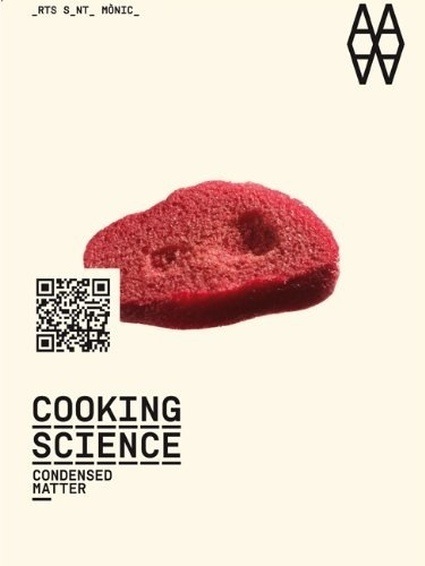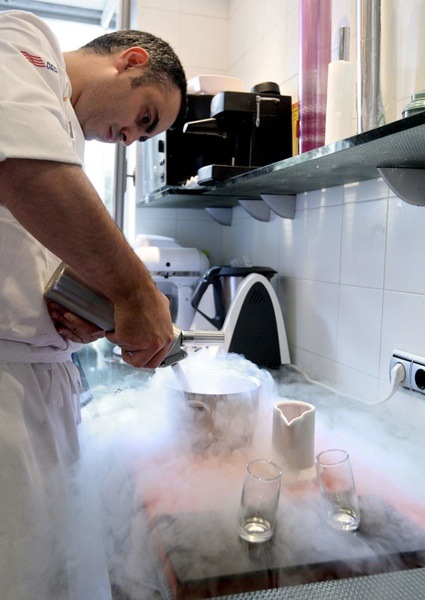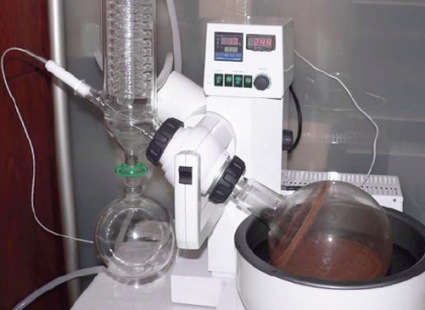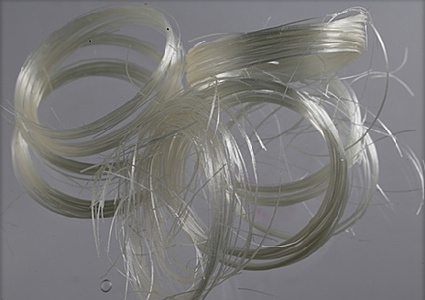Cooking Science: Condensed Matter, by Vicenc Altaio, Ferran Adria, and Josep Perello (available on Amazon UK and USA.)

Publisher Actar writes: Condensed matter. Cooking science invites us to look at cooking, gastronomy and nutrition through the scientist’s eyes and see them as a truly cultural activity which brings a wealth of knowledge into play. Challenging the predominance of visual culture, our eating habits and the pleasure of food privilege the senses of taste, touch, smell and even hearing. Perception and landscape define our cooking, but cooking also has a component of reflection and innovation based on scientific and technological research. Informed by this awareness, the new Catalan cuisine as exemplified by the Fundació Alícia is a major force for culinary innovation. This volume constitutes a unique document of this task. The book ‘s QR codes link the paper media with the digital media, augmenting the reality and giving further information.
 (image found on el rebost del bisbe)
(image found on el rebost del bisbe)
During the last edition of Documenta, a debate sparkled to determine whether cooking was an art. Roger Buergel, director of the Kassel exhibition had indeed challenged the definition of art by naming Ferran Adrià a featured artist of Documenta. For each of the 100 days of the event, two visitors were randomly selected and flown to the Costa Brava for a dinner at Adrià’s Michelin 3-star restaurant elBulli.
Polemics don’t rage so fiercely when cooking is affiliated with science. Cooking Science: Condensed Matter is the catalogue of a show of the same name which closed recently at Arts Santa Mònica in Barcelona. The exhibition turned the art space into a culinary laboratory and demonstrated that cooking goes hand in hand with science and experimentation.
Some exhibition catalogues stand on their own two feet without trouble, they can be enjoyed even if you didn’t visit the exhibition they are meant to complement. Others struggle to give you that same satisfaction. Cooking Science suffers from its frequent references to senses and exhibits that cannot easily be reproduced with mere words and photos. Scientist and ‘taste designer’ Dario Sirerol manages to suggest the power of a combination of our senses in his essay ‘Synaesthetic Cuisine. Odour Perception and Cookery’. But no matter how evocative and informed his text is, it clearly cannot have the same impact as the ‘fragrant’ room he curated for the exhibition.
 The Rotaval
The Rotaval
 Vinegar strings
Vinegar strings
I would also have liked to read a medical/nutritional/dietetic point of view on the chemicals and processes involved in the creation of the unexpected textures, scents, temperatures, flavours and other sensations that characterize, for example, the Molecular Gastronomy often referred to in the book.
Still, the book has the merit of having introduced me to a fascinating world where cooking meets physics, chemistry and biology. I also discovered a few charismatic figures such as the one of Hervé This.
Hope you’ll enjoy as much as i did this video of a demonstration lecture that the cook and chemist gave on Molecular Cooking is Cooking – Molecular Gastronomy is a Scientific Activity: recent results of molecular gastronomy and how to use them at the Imperial College in London last year.
A few pictures of the exhibition at the Arts Santa Mònica flickr stream.
Image on the homepage: Hector Mediavilla / Polaris for TIME.
Related: Nouveau Neolithic, PIG 05049, a conversation with Christien Meindertsma, The Meat of Tomorrow.
Image on the homepage found on The Daily Mail.
